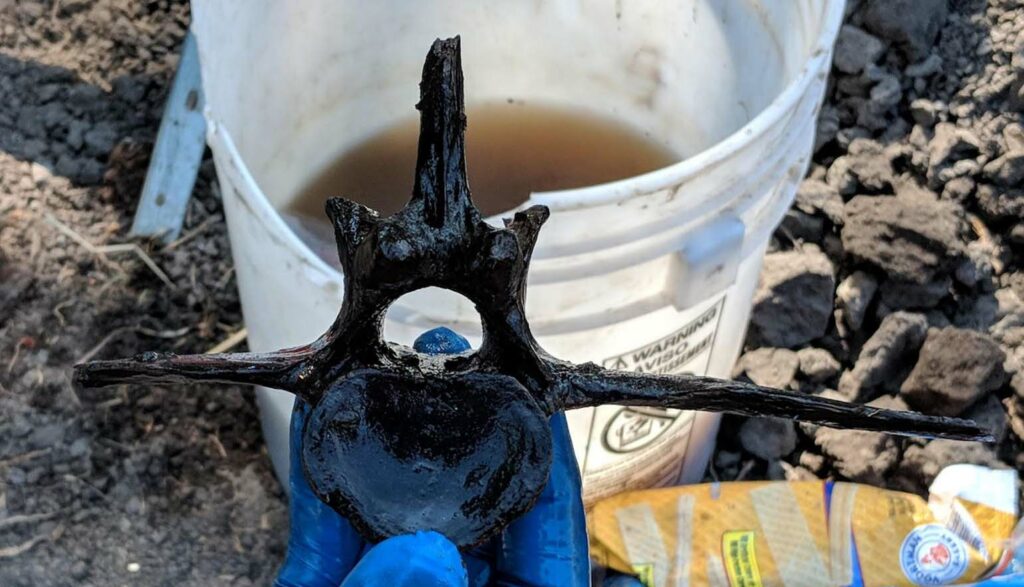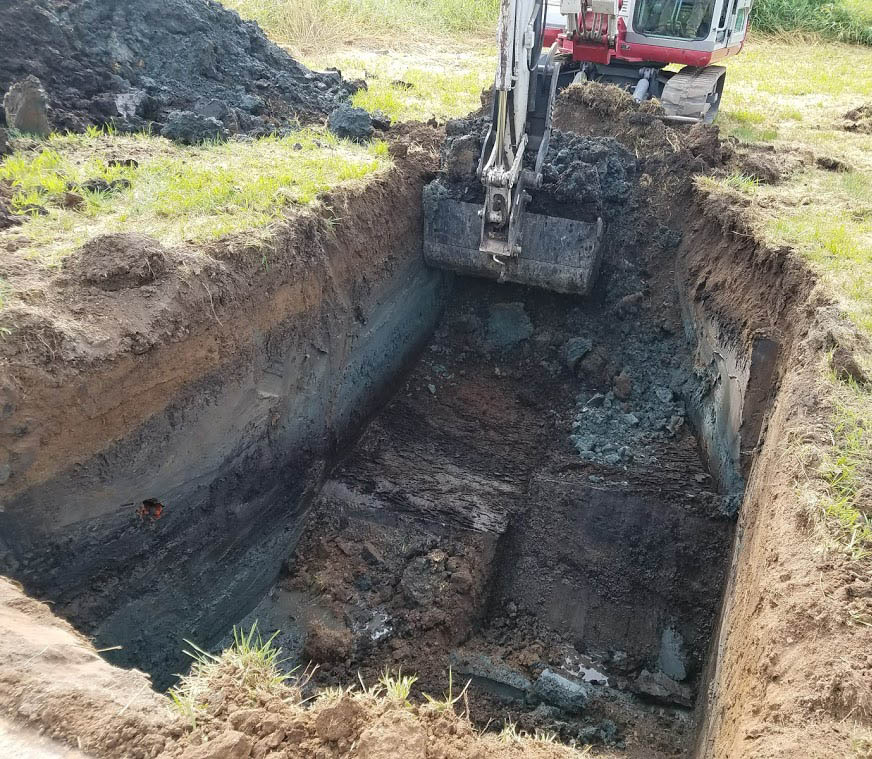Two field opportunities occurred in the summer of 2018, with one event in July and the other in August. Two different site areas within the boundaries of the City of Woodburn were investigated. Both had been previously tested, with positive results from both excavations. Included in previous finds were the giant bison (Bison antiquus), giant ground sloth (Paramylodon harlani), western horse (Equus occidentalis), and western camel (Camelops hesternus), all of which are now extinct. Some predator species in the area include the Pleistocene bear that became the black bear (Ursus americanus), dire wolf (Canis dirus), and a huge predator bird with a 12’-14’ wingspan (Teratornis woodburnensis). Also at this site are the remains of more typical species, including rabbit, muskrat, beaver, gopher, turtle, snake, deer, elk, coyote, and five other species of bird.


A horse vertebra in the initial stages of being cleaned (L), and very capable volunteers excavating their units (R).
NPR/OPB came to do interviews and document our work, and visiting scientists from the Stedman Lab at the Center for Life in Extreme Environments came to take soil and water samples. They also shared their previous work with us during a lunch break. Some of their work is featured at https://www.extremeviruses.org/. These sites are a wonderful research environment, as the preservation at both sites is so good that even 12,000 year old wood still looks fresh.


A copy of the poster that first introduced us to the Stedman Lab was presented to site coordinator and biology teacher, David Ellingson (L). Wood that still looks fresh after millennia was noted (R).
While the recovery of animal bone, mammalian hair, and the occasional lost cultural item are not frequent, nearly everyone recovers something. After troweling through blocks of different types of soils, volunteers water screen the sediments. This allows us to find specimens that were previously hidden within clumps of soil. Whether troweling or screening, archaeological methods are used.


Ancient mammal bone emerges from 12,000 year old sediments. This year, horse and bison were the dominant finds.
The different layers, or strata, reflect the many different ecosystems that have existed here over the last 16 millennia. Clearly seen are an ancient forest, stratified peat bogs, loamy soil interludes, and flood silts. Each is a different color, a different texture, and represents a different part of the area’s history. Every year, volunteers are stunned by the dramatic changes that have occurred within a single place on the landscape over time, and by the preservation of even small seeds and ancient leaves.


The strata exposed in trench walls record a history of the area that spans nearly thirteen thousand years (L). Researchers have found novel virus genomes in samples from the dig area and several viral sequences in the metagenome from ancient peat (R).
